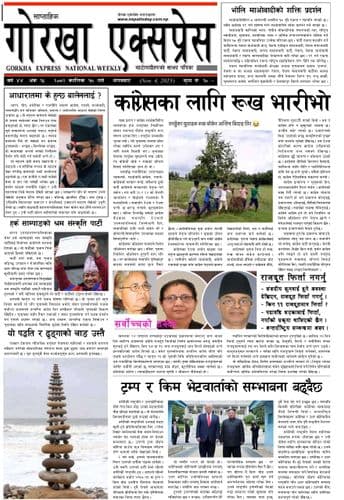To help authorities better monitor and manage forest fires, the International Centre for Integrated Mountain Development (ICIMOD) has made available a two-day fire outlook that provides a general index of fire risk throughout Nepal’s forested areas. This tool will enable forest fire managers to anticipate and prepare for future fire danger, making informed decisions about deploying resources, implementing fire prevention measures, and carrying out controlled burns to mitigate fire risk.
‘The fire outlook module is another step forwards in our efforts to provide innovative and effective remote sensing and geospatial solutions to address forest fires in Nepal,’ says Birendra Bajracharya, Chief of Party – SERVIR-HKH, ICIMOD.
The fire outlook module provides a reliable and accurate nationwide assessment of potential fire dangers. It was developed by customising a Fire Weather Index methodology and feeding data from the High-Impact Weather Assessment Toolkit (HIWAT) – Nepal, including temperature (°C), relative humidity (%), wind speed (km/h), and precipitation (mm).
The module has been incorporated in Nepal's Forest Fire Detection and Monitoring System, an operational system that provides information on historical forest fires and near real-time fire detection, monitoring, and burnt area assessment. ICIMOD’s SERVIR-HKH initiative, a joint USAID and NASA partnership, developed the system in close collaboration with Nepal’s DoFSC, Ministry of Forests and Environment, in 2012.
‘The fire outlook is a welcome addition. It will enhance forest fire management efforts in Nepal by providing early warning on potential fire incidents across the country and allowing forest management officials to take precaution and swift action,’ observes Rabindra Maharjan, Deputy Director General at the DoFSC.
Nepal's Forest Fire Detection and Monitoring System assimilates active fire data three times a day from NASA’s website, adding important information such as administrative unit (i.e. district, VDC, and ward number), protected area identification, land cover type, elevation, and slope.
The DoFSC has been using the system to monitor, report, and respond to forest fires nationwide closely. A dedicated unit within the department consolidates actions on the ground and manages the system in-house to capture information on reported fire incidences, estimated damage, and fatalities from forest fires.
‘The fire outlook module and the Forest Fire Detection and Monitoring System are excellent examples of how technology and collaboration can be leveraged to tackle environmental challenges. We are proud to partner with ICIMOD and the DoFSC in developing these tools to protect Nepal's forests,’ says Daniel Irwin, Global Program Manager for the SERVIR Program at NASA.
ICIMOD is working on scaling the approach to generate forest fire outlooks for the entire region and different countries in the HKH region.
To learn more about the Forest Fire Detection and Monitoring System in Nepal and the fire outlook module, visit https://servir.icimod.org/science-applications/forest-fire-detection-and-monitoring-in-nepal/
|
|




